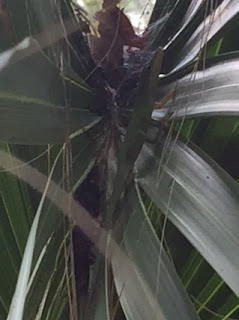Moccasin Lake Nature Park.
Thursday August 27th.
Temperature: 76 degrees F.
Wind: W 4 mph.
Sunrise-Sunset: 7:07-7:58.
Clouds: Very grey, no sky visible.
Precipitation: 90%.
I arrived at the park around 1:30 P.M. not realizing that this was incredibly early. This gave me time to take note of the weather and learn a little about the park's history. One of the more interesting facts about the park was its past as a borrow pit. A borrow pit is a location where many people and companies "borrow" soil for use in other places without ever giving any back. This particular pit was reclaimed in the early 1980's and has been used and conserved as a nature park ever since.
Once the class arrived we spent the first hour or so examining the enclosures of both reptiles and birds. Among these was the King Snake, a native of Florida that is immune to snake venom and whose diet includes other snakes, reptiles, and birds. On the topic of birds, one of the enclosures held a pair of injured Bald Eagles which travel south to Florida for the summer breeding season.
These majestic birds scavenge for much of their food, often stealing prey from smaller birds.
After traveling through the park i noticed two rather worrying things. The first of which being the hostile takeover of the invasive species known as Caesar's Weed.
This plant has tall stalks and broad flat leaves, allowing it to shade out other plants thus making more room for it to spread.
Lastly, is the problem of erosion. With the tremendous amount of rainfall this season moccasin lake park has undergone both flooding and dangerous washouts.
As this water surges through it can wash away much needed soil, uprooting some plants and exposing the roots of others. The aftermath of a washout (as seen above) can create a dangerous environment for plants and animals alike.
























